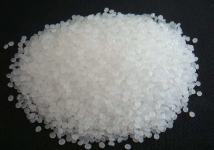read: 969 time:2025-03-24 11:24:11 from:化易天下
Acetone, often referred to by its chemical name, propanone, is a volatile, colorless liquid that has a distinct odor. It is one of the most commonly used solvents in various industries due to its effectiveness in dissolving a wide range of substances. But what is acetone, and why is it so widely utilized? This article delves into the properties, uses, and safety considerations surrounding this versatile compound.
To understand what acetone is, it’s crucial to start with its chemical composition. Acetone has the molecular formula C₃H₆O and belongs to the ketone family. It is a simple organic compound where the carbonyl group (C=O) is bonded to two methyl groups (CH₃). This structure makes acetone highly polar, which contributes to its excellent solvent properties.
Acetone is a volatile liquid with a boiling point of 56°C (132.8°F), which means it evaporates quickly at room temperature. This volatility, combined with its ability to dissolve both polar and non-polar substances, makes it extremely useful in various applications, from industrial manufacturing to household products.
When discussing "what is acetone," it’s impossible not to highlight its extensive use in industry. Acetone is a key solvent in the production of plastics, fibers, drugs, and other chemicals. One of its most significant applications is in the production of methyl methacrylate and bisphenol A, which are precursors to polymers like acrylic plastic and polycarbonate. These materials are essential in the automotive, construction, and electronics industries.
Acetone is also used in the manufacture of lacquers and varnishes, where it serves as a thinning agent. Its ability to dissolve various resins and polymers ensures a smooth and even application of these coatings. Moreover, acetone is commonly used in the formulation of cleaning agents and nail polish removers due to its effectiveness in breaking down oils, paints, and other tough substances.
Understanding what acetone is also involves recognizing the safety precautions necessary when handling it. Acetone is classified as a flammable liquid, meaning it can ignite easily at room temperature. Proper storage in tightly sealed containers and well-ventilated areas is essential to prevent fire hazards.
Additionally, while acetone is generally considered safe for use in low concentrations, prolonged exposure, particularly in poorly ventilated spaces, can lead to health issues. Inhalation of high concentrations of acetone vapors can cause dizziness, headaches, and respiratory irritation. Skin contact with acetone can also lead to dryness and irritation, as it strips away natural oils. It is always recommended to use gloves and work in a well-ventilated area when handling acetone.
Another critical aspect to consider when asking "what is acetone" is its environmental impact. Acetone is classified as a volatile organic compound (VOC), which means it can contribute to air pollution if released in large quantities. However, it is also biodegradable and does not persist in the environment, breaking down relatively quickly in water and soil. Despite this, it is important to follow local regulations regarding the disposal of acetone, ensuring it is not released directly into the environment.
So, what is acetone? It is a versatile, highly effective solvent that plays a crucial role in various industrial and consumer applications. Its chemical properties make it indispensable in the production of plastics, coatings, and pharmaceuticals. However, it is also a substance that requires careful handling and disposal to ensure safety and minimize environmental impact. Understanding these aspects of acetone helps in appreciating its significance in both industrial and everyday contexts.

Jincheng Petrochemical's 300000 ton polypropylene plant successfully trial production, 2024 polypropylene market analysis

The ABS market remains sluggish, what is the future direction?

Market differentiation of bisphenol A intensifies: prices rise in East China, while prices generally decline in other regions

The production method and process flow of silicone acrylic lotion, and what are the common raw materials